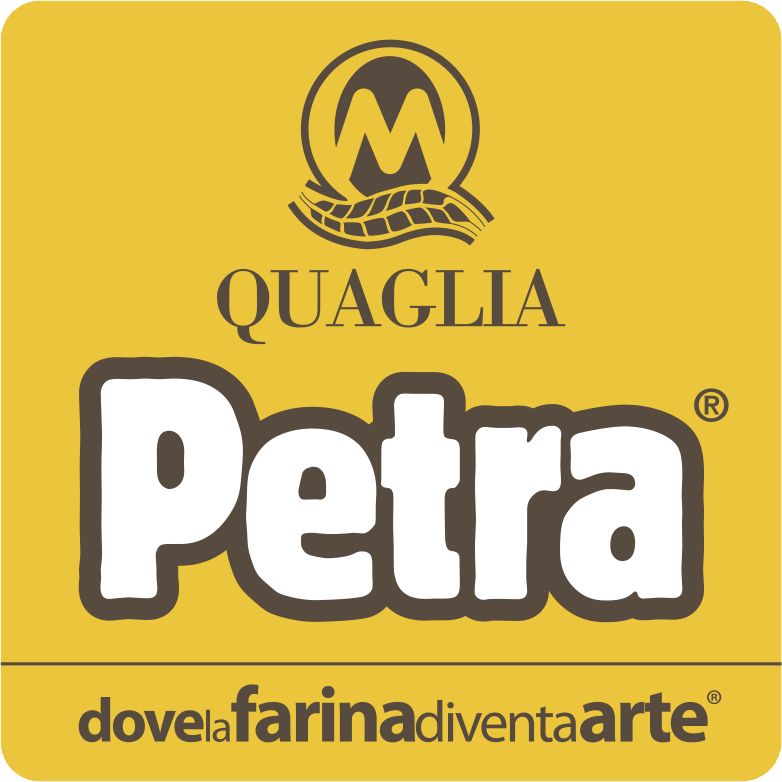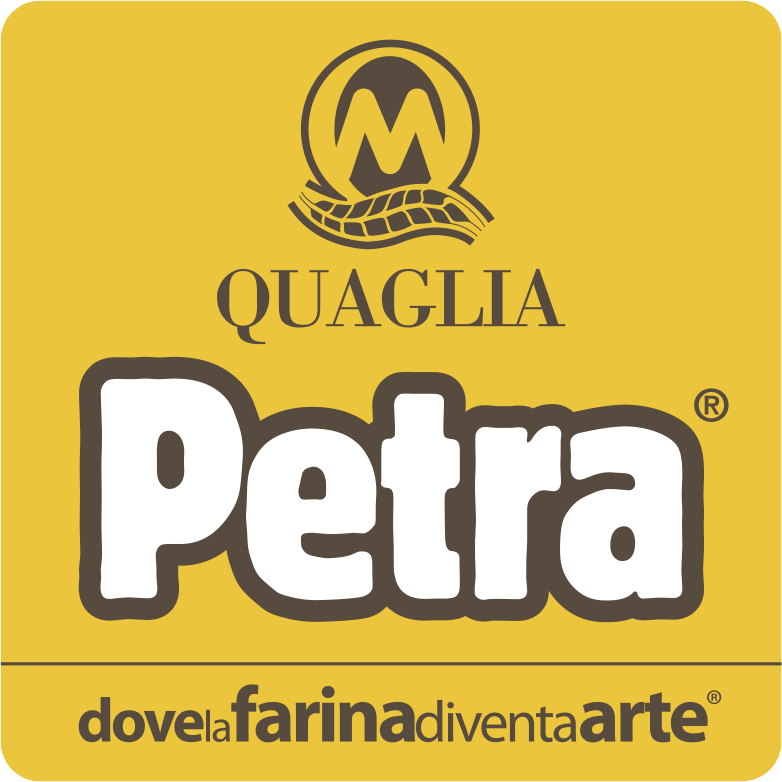Imagine you’re in Milan, or any other Italian cities except for Naples, in the late 90s, Sunday evening, after a trip to a cinema. It’s time for the ritual pizza time.

Milan (but it could be any other Italian city except for Naples), late 90s, early '00s . Sunday evening, after the cinema, it's time to indulge in the ritual pizza. We go to the restaurant "which is also a pizzeria", or in that place run by Egyptians, who "looks, do not turn up their noses, because they make a delicious pizza, better than Italians".
We are content with a simple Margherita , to want to do the eccentrics with buffalo mozzarella instead of fiordilatte, or a Quattro Stagioni with artichokes and mushrooms in oil that come from any industrial packaging at a low price.
The tomato sauce is unpretentious - often poor, but what do you want to do, who knows how long it has been there - and mozzarella does not stretch as it should, so that as soon as it cools a little 'gets the consistency of a chewing gum. But do you really want to miss Sunday pizza? Despite the thirst, that once you get home, punctually appears and seems not to give you escape, forcing you to keep a nice bottle of water next to the bed.
With the due differences of the case, this was a good or bad experience, that until a long time ago we Italians had with pizza, one of the symbols of our country. That continued to be loved, desired, eaten, but remained the same as a 'poor' food - indeed, 'democratic' - prepared with ingredients that selected had little if nothing.Today, twenty years later, the pizza is something of a celebrity , worshiped in local sprouting like mushrooms (PGI, mind you) and that define 'pizza' as an understatement .
It is dedicated to events, symposia, special doughs, imaginative and sometimes risky experiments ; in its namethe pizza chefs have been elevated to “chefs du rang” , and they are the proponents of this rebirth, the superstars for whom we move from one end of the city to the other after that evening cinema.
Eating a good pizza , in 2018, means investing at least twenty-twenty-five euros , beer or drink included: we are still under a popular cost, after all, but this increase can not be fully understood if we ignore the process of ennobling that our Margherita was subject to.
A family-run company founded in 1914, Molino Quaglia is the leading company in Italy in the production of high quality soft wheat flour destined for 100% of the national market and, with a range that consists of several lines, for bakery, pastry, the pizzeria, the haute cuisine.
« In 2007 we started to think about a pizza made with the highest quality ingredients : we had launched a specific stone-ground product that we thought could make it better, but then the really low level of the sector made entry difficult. The majority of pizza makers - even Neapolitans - were improvised and undemanding compared to the raw materials used:So anyone, regardless of cooking education, could be a pizza-maker».
The idea is as simple as it is revolutionary: to create a more complete and rich flour, which expresses the maximum of its potential together with the wild yeast: so why not organize lessons on sourdough?
«Arrived at this step», continues Gabrieli, «we realized that one of the enemies to fight was the box - mushrooms, tomato sauce, olives, anything - that was opened automatically, without worrying about the taste and of the combination. To give visibility to a project in which we believed, in 2011 we decided to go to Naples - home of pizza - and create an event, Anteprima PizzaUp, during which talk about the yeast and present the possibility of a different pizza, aimed at excellence ».
For non-professionals, Molino Quaglia is a provocation to all effects: the Neapolitan pizza is in fact historically built on the yeast and on the 00 flours, so the introduction of sourdough could appear as a blasphemy .
« We have reunited the historical pizza makers , the associations of the Neapolitan pizza and the Gambero Rosso school. On stage, together with a moderator journalist, two famous pizzaioli (one from Naples and one from Verona) - one of whom had already distinguished himself during some courses at our University of Pizza - discussed with the others about the possibility of inserting the sourdough into the dough», Says Gabrieli.
The debate immediately became very heated, so much so that it led to controversy: the Neapolitan world opposed this approach, but the company's intent was not to obstruct, but to lead pizza chefs to a deeper reflection on the totality of the ingredients used.
This challenge led to a process that led the company to increase its investments in the University of Pizza, in the annual PizzaUp appointment, the first technical symposium on Italian pizza, and in the Manifesto of Contemporary Italian Pizza .
In just a few years, the Molino Quaglia laboratory has become the meeting point for the most curious and eager to innovate pizza chefs:
«The activities undertaken have created the phenomenon of 'gourmet pizza' , as the Gambero Rosso guide defined it, which was very useful because it finally turned its attention to the ingredients. Today, gourmet pizza is a pizza that includes fresh ingredients, combined with cooking techniques and high quality : there is a quest by the pizza chef, who is now more scrupulous and perfectionist about what is served at the table », underlines Gabrieli.
A process that has led to a general improvement in pizza, regardless of the style of each pizza maker: in the consumer's mind, the perception of this product is consequently higher, now comparable to the proposals of a nicer restaurant.
Then in 2015, Expo arrives , and Milan becomes an international showcase, a sort of "showroom of Italian excellences, the ideal city to present new formats ", as Gabrieli describes it. It is in fact in the Lombard capital that we test models of pizzerias to be replicated in Italy or abroad, attracting names who would never have thought to move from the places where they had established themselves.
The risk of saturating the offer , for Gabrieli, is not to be taken into consideration:
"It's true that many are emerging at a fairly sustained pace, but quality pizzerias are replacing the poor ones; the lowest common denominator is a qualitative increase in the sector and a greater sensitivity towards the health of the consumer ".
A consumer who has evolved in turn: «It is unthinkable to expect to pay eight, nine euros for a pizza dinner, including drinks. How does a pizza chef - if he wants to buy the best trained staff - to apply such low costs? The increase in the price of pizza, if accompanied by a growth in proportional quality, is convincing in the public eye : it is a phenomenon that is having positive economic effects on a sector that in the past has fallen into decline, which is pushing the pizza chefs to study and companies to capitalize on the quality of the product ».
What should we expect from the pizzas of the future?
« After a bit of a 'baroque' phase, I think it we are moving towards simpler pizzas, but with ingredients - from flour to sourdough to toppings of absolute quality. To get there, the pizza chefs will have to take advantage of cooking techniques that allow them to manage the processing of these ingredients: we have taken a big step forward with the yeast, now is the time to begin to embark on a path of simplification ».
What has been created is a virtuous circle that involves different actors, from producers of flour to producers of tomato sauce and mozzarella:
« It's a choral work that has a very strong social value. The more we raise the quality of the ingredient, the less we will have to use it in the dish: between a bad tomato and a good tomato there is a difference of about half the amount to be used in pizza, because it tastes much more intense than the second. At the level of agricultural production and environmental impact there will therefore be a substantial amount of resources that are not wasted, without considering that people will eat the better option,» concludes Gabrieli.
In present day, in Italy the number of companies that sell pizzas are about 127 thousand , of which about 76 thousand are restaurants; half of the latter are bars with pizzerias, the remaining half restaurants are pizzerias. The pizza-makers employed are around 105,000 , a number that almost doubles over the weekend: in our country, 8 million pizzas are produced every day , reaching 3 billion in a year.
Dizzying numbers, which are also reflected in the economy: pizza is a superb business of 15 billion euros in annual turnover , double with the other businesses related. To estimate the economic weight is a survey conducted by the Cna Study Center in collaboration with Cna Agrofood: between 2015 (year of Expo) and the first quarter of 2018, businesses with pizzeria activities have grown from 125,300 to 127 thousand.
According to the survey, the tradition wins: the favorites of 80% of consumers are those of the classical tradition: Margherita, Marinara, Napoletana and Capricciosa. When the bill arrives, almost all round pizzas 'from flat' costs between five and ten euros, but there is a market segment (4%) over the ten euro mark: it is here that gourmet pizza reigns, a rising star that in a few years has scored a + 12.1% of orders. A meteor or trend destined to consolidate?
To posterity the difficult sentence, meanwhile, however, December 7, 2017 the real Neapolitan pizza scored a hit, entering by law in the list of assets protected by UNESCO . «The art of Neapolitan pizzaiuolo has just entered the list of intangible cultural heritage of humanity. Congratulations, Italy! » Recited the tweet of the UNESCO council meeting in Jeju, South Korea.
And it is said that for every pizza maker who exulted, there was a Milanese who chose his cinema on Sunday based on the proximity to the last Neapolitan pizzeria opened.
But this is another story.
Marianna Tognini
source: https://it.businessinsider.com/non-e-piu-la-solita-pizza-il-piatto-simbolo-dellitalia-si-rifa-il-look-e-trascina-leconomia-oggi-vale-15-miliardi/
Leggi il testo integrale nel link FONTE (qui sopra)
BREAD RELIGION
Iscriviti e ricevi le novità nella tua email.






